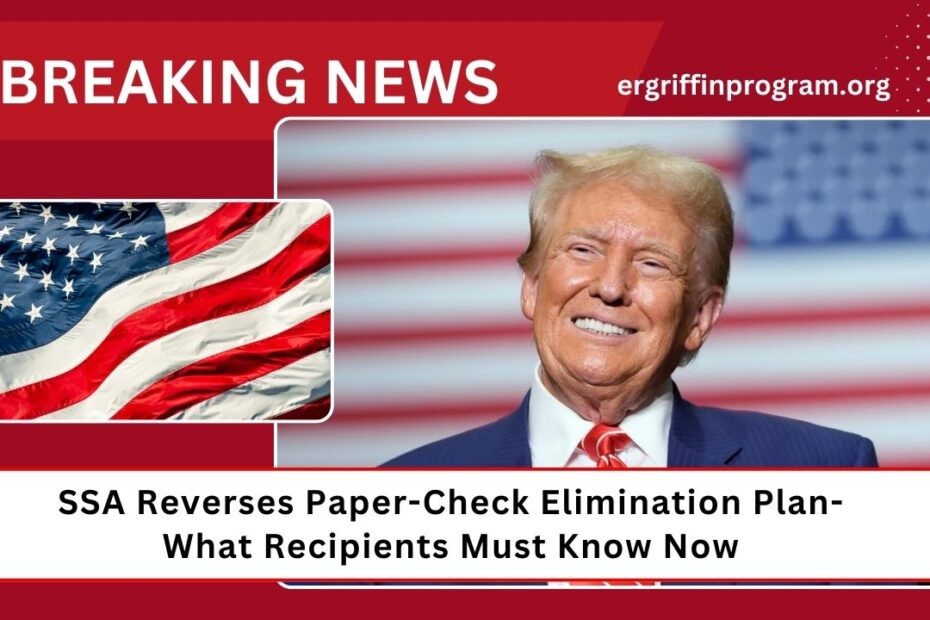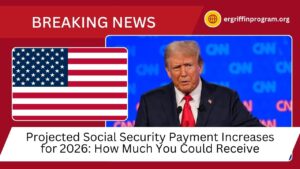The Social Security Administration (SSA) has reversed its previous decision to eliminate paper checks for benefit payments. Here’s everything you need to know in detail:
Background: What Was the Original Plan?
- In March 2025, per a presidential executive order, SSA planned to phase out paper checks by September 30, 2025, moving beneficiaries exclusively to electronic payments (direct deposit or the Direct Express® card) for faster, cheaper, and safer delivery .
- This shift was part of a government-wide modernization effort, aimed at reducing fraud risk, payment delays, and costs. A paper check costs about 50 cents to issue, while an electronic funds transfer costs less than 15 cents .
Why It Matters—and the Outcry That Followed
- Although less than 1% of beneficiaries—approximately 600,000 individuals—still receive payments via paper checks, many belong to vulnerable groups: seniors, rural residents, and those unbanked or with limited digital access.
- The plan sparked public backlash, with lawmakers like Senator Elizabeth Warren voicing concern that eliminating paper checks would leave these groups stranded .
The Reversal & What SSA Will Do Instead
| Policy Element | Details |
|---|---|
| Original Deadline | Paper checks to be phased out by September 30, 2025 |
| Reversal Announced | SSA will continue issuing paper checks in limited cases where no electronic option exists |
| Target Group for Checks | Approximately 600,000 Americans (less than 1% of recipients) |
| Electronic Outreach Efforts | SSA will encourage direct deposit or Direct Express®, with notices and inserts included |
| Cost Savings | Paper check: ~$0.50; EFT: < $0.15—significant annual savings for government |
| Security Concerns | Paper checks are 16 times more likely to be lost or stolen compared to electronic methods |
| Lawmaker Oversight | An independent audit of SSA customer service (wait times, responsiveness) was agreed to by SSA |
Key Takeaways for Recipients
- Paper checks remain available for those who truly need them—SSA promises no one will be left behind
- SSA is improving outreach—notifying existing paper check users about switching to direct deposit or Direct Express®, including helpful inserts in mailings and tech support
- Customer service is improving—average hold times dropped from 30 minutes in 2024 to 18 minutes in 2025, and an independent audit will review performance metrics.
- Legal protections differ—benefits delivered electronically enjoy stronger creditor safeguards than cash from paper checks .
The SSA’s decision to reverse the paper-check ban is a win for inclusivity and access. While the shift to electronic payments continues—due to its advantages in speed, cost, and security—SSA acknowledges the needs of those without digital access.
Recipients should watch for SSA communications, evaluate their comfort level with digital payments, and rest assured that paper checks remain available if needed.
FAQs
Will paper checks still be sent after September 2025?
Yes—SSA has reversed the full elimination. Paper checks will still be issued in limited, justified cases where recipients lack viable access to electronic payments.
Who qualifies to continue receiving paper checks?
Individuals without bank accounts, reliable internet access, or digital literacy—particularly seniors, rural residents, and the unbanked—are eligible to continue receiving paper checks when necessary.
How can I switch to electronic benefits if I want to?
You can enroll in direct deposit via your bank or sign up for the Direct Express® prepaid debit card if unbanked. SSA is mailing materials and providing assistance online and by phone to facilitate the transition.


